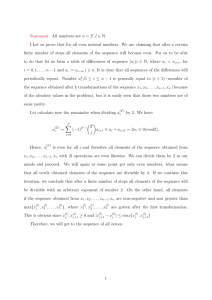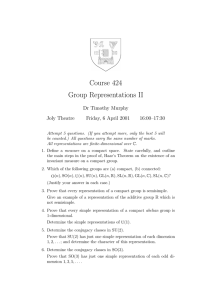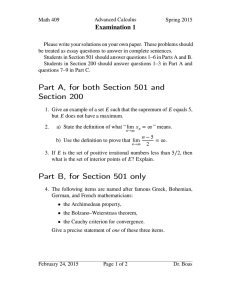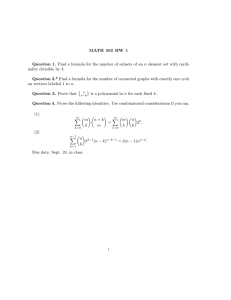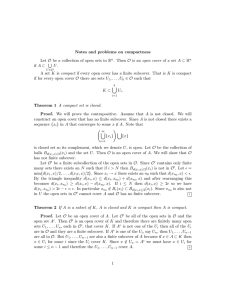Solutions to Practice Problems, Math 220 1 Solution 2
advertisement
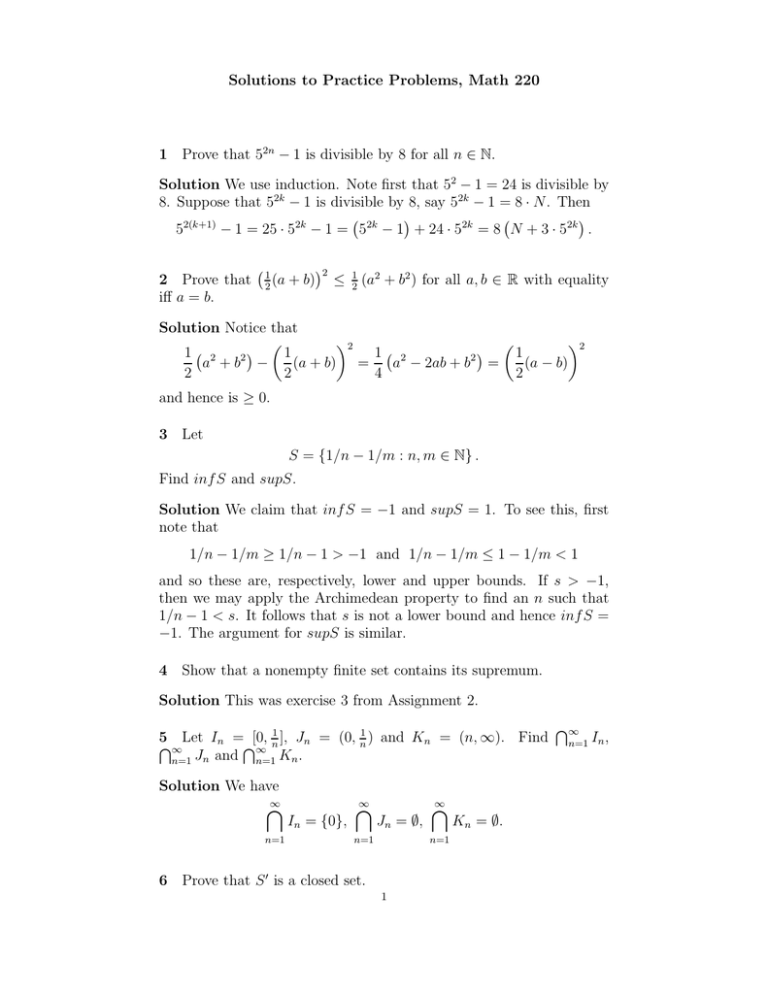
Solutions to Practice Problems, Math 220
1 Prove that 52n − 1 is divisible by 8 for all n ∈ N.
Solution We use induction. Note first that 52 − 1 = 24 is divisible by
8. Suppose that 52k − 1 is divisible by 8, say 52k − 1 = 8 · N. Then
52(k+1) − 1 = 25 · 52k − 1 = 52k − 1 + 24 · 52k = 8 N + 3 · 52k .
2 Prove that
iff a = b.
1
(a
2
+ b)
2
≤
1
2
(a2 + b2 ) for all a, b ∈ R with equality
Solution Notice that
2
2
1
1
1 2
1 2
2
2
a +b −
a − 2ab + b =
(a + b) =
(a − b)
2
2
4
2
and hence is ≥ 0.
3 Let
S = {1/n − 1/m : n, m ∈ N} .
Find inf S and supS.
Solution We claim that inf S = −1 and supS = 1. To see this, first
note that
1/n − 1/m ≥ 1/n − 1 > −1 and 1/n − 1/m ≤ 1 − 1/m < 1
and so these are, respectively, lower and upper bounds. If s > −1,
then we may apply the Archimedean property to find an n such that
1/n − 1 < s. It follows that s is not a lower bound and hence inf S =
−1. The argument for supS is similar.
4 Show that a nonempty finite set contains its supremum.
Solution This was exercise 3 from Assignment 2.
1
5
], Jn = (0, n1 ) and Kn = (n, ∞). Find
n
T∞Let In =T[0,
∞
n=1 Jn and
n=1 Kn .
Solution We have
∞
\
n=1
In = {0},
∞
\
Jn = ∅,
n=1
∞
\
n=1
6 Prove that S 0 is a closed set.
1
Kn = ∅.
T∞
n=1 In ,
2
Solution Suppose that x 6∈ S 0 . Then there exists a neighbourhood
N(x) such that N ∗ (x) ∩ S = ∅. If there is a y with y ∈ N(x) ∩ S 0 , then
for every neighbourhood of y, we can find a z ∈ S. In particular, since
y 6= x, we can, choosing our neighbourhood suitably small, find a N(y)
such that x 6∈ N(y) and N(y) ⊆ N(x) ∩ S. This means that there is a
z ∈ S with z ∈ N ∗ (x), a contradiction.
7 If S is a compact subset of R and T is a closed subset of S, prove
that T is compact using (a) the definition of compactness; and (b) the
Heine-Borel Theorem.
Solution The part (b) is easy since S compact means that S is bounded
and hence so is T . Since T is closed and bounded, it is compact via
Heine-Borel. To do this via the definition is harder. Suppose that T is
not compact. Then there exists an open cover of T , say A, which has
no finite subcover. Since T is closed, it’s complement R \ T is open.
It follows, if we add in the set R \ T to the collection of sets A, then
we have an open cover of R and hence of S. Since S is compact, this
cover has a finite subcover B. Now either B itself or B \ {R \ T } is a
finite subcover of A, a contradiction.
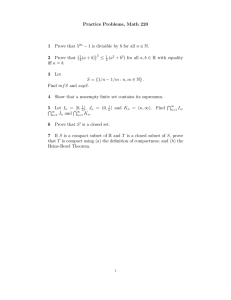
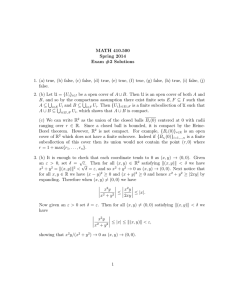
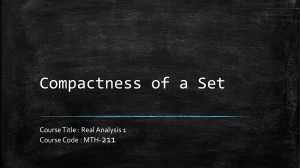
![[Topology I, Final Exam — Solutions] The exam consists of 6](http://s3.studylib.net/store/data/008081748_1-8fb9b7a2e2e854f9954d0c709155560e-300x300.png)
